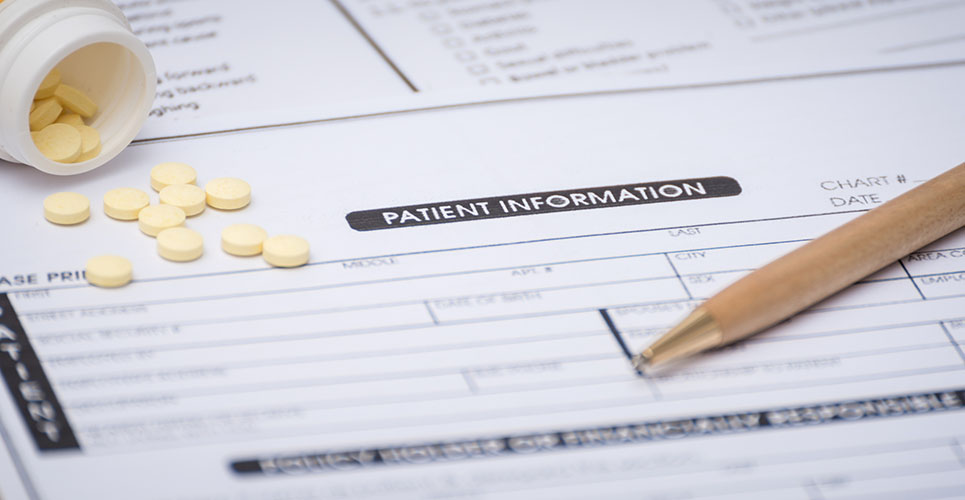teaser
Thomas Ague
RPh MPM
Executive Vice President/COO
Richard Schaeffer
Vice President/CIO
St Clair Hospital
Pittsburgh, PA
USA
E:[email protected]
We thought we were pretty good, average at worst. St Clair Hospital is a 331-bed acute care hospital in Pittsburgh, Pennsylvania (USA), and each year we are required to report our level of medication errors to the Board of Directors. We routinely reported around 600 medication errors. We didn’t know what we didn’t know.
In March 2004, we implemented a five-rights medication verification system in our hospital using barcodes on medications, patient wristbands and the nurse’s identification badges. The system, called VeriScan (by Sculptor Technologies), enabled the nurse to perform the five rights of medication administration. We implemented VeriScan across all 16 of our nursing units over the next eight months and then tabulated the results to examine where errors were being prevented and how to improve the process. Table 1 presents the results of three studies that were performed and identifies the frequency of errors that were caught and prevented. Instead of the 600 medication errors per year, we were preventing over 5,000 medication errors per year.
[[HPE29_table1_83]]
After a thorough analysis of the data, several conclusions were drawn. First, preventable errors occur at alarming rates. Secondly, the rate of wrong-medication errors will decrease over time because the handheld system, through both positive and negative feedback, teaches the nurse to avoid the opportunity for error. Thirdly, when bed census and patient transfers increase, the number of wrong-patient errors increases, and only a technological aid such as the handheld can prevent the errors from occurring.
In 2005 we switched from barcodes on the patient’s wristband and nurse’s badge to passive radiofrequency identification (RFID) tags in order to speed the process for the nurse. The cost to change to passive RFID tags was negligible, while medications remained barcoded. The VeriScan system handled both types of scans, barcode and RFID, using a Socket dual-mode scanner. Voluntary adoption of the system is a crucial success factor when implementing a five-rights system. Nurses readily adopt safe practices, but there is a reluctance to embrace a system that consumes more of their time. The addition of RFID tags made the medications verification process time-neutral and improved nursing adoption to nearly 100%. Another feature that made adoption successful was the automatic charting of the medication’s administration into the electronic medical record, removing that work from the nurse’s end-of-shift responsibilities.
Another key to the process was utilising Pocket PCs with all the information at the nurse’s fingertips in the patient’s room, as opposed to awkward mobile carts that are more often left in the hallway. The Pocket PCs operate on the hospital’s wireless network (802.11) and, with the bright clear screen of the Pocket PCs, they were readily accepted by nurses. For the pharmacist, verifying the physician’s order, a routine responsibility, and providing unit-dose medications with barcodes on each package was made easier through the use of a robotic distribution system.
Preventable adverse drug events (PADEs) have a cost to the hospital in wasted medications, patient intervention and rescue, increased length of stay costs, deaths and, of course, the anguish the nurse experiences in making the mistake. We have calculated a return on investment (ROI), as shown in Table 2, and found that the costs prevented covered the cost of implementation in the first year.
[[HPE29_table2_83]]
Today we see the nurse and the Pocket PC as the centre of patient safety at the bedside. The VeriScan system is being expanded to include verification that laboratory specimens are labelled for the correct patient; programming “smart pumps” that administer IV solutions to the patient; checking dietary allergies with the meals provided; and making sure the right patient is receiving the right diagnostic test. These sound like simple things to assure are correct but, in a busy hospital and busy departments, you don’t know what you don’t know.
We also envision the Pocket PC as an extraordinary tool for the nurse to save time in tracking where the nearest cart or IV pump or wheelchair is located in the hospital. Tagging the items with an active RFID tag and capturing the signal on the same wireless network will allow her to find the nearest piece of equipment rather than having to call around or search the hospital.
You don’t know what you don’t know. Medication errors and other preventable errors do occur while the patient is receiving care. Systems such as VeriScan are easily implemented, provide a proven and realistic ROI, and should be part of everyone’s business.

